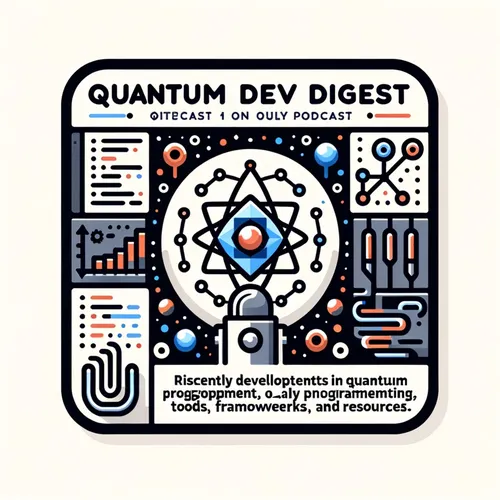Caltech's Quantum Memory Breakthrough: Sound Waves Amplify Quantum Computing's Future
- Author
- Quiet. Please
- Published
- Sun 31 Aug 2025
- Episode Link
- https://www.spreaker.com/episode/caltech-s-quantum-memory-breakthrough-sound-waves-amplify-quantum-computing-s-future--67571876
This is your Quantum Dev Digest podcast.
A metal door whooshes closed behind me, and the chill of the quantum lab bites through my sleeves. I’m Leo, your guide for this episode of Quantum Dev Digest, where today’s quantum news crackles with the drama of discovery.
Let’s jump straight to the heart of it: This morning, my feed was ablaze with news out of Caltech—a quantum memory breakthrough that could change the scale and reliability of quantum computing. Picture this: Scientists led by Mohammad Mirhosseini managed to make a quantum “tuning fork,” where information survives up to 30 times longer than in previous devices. They do it using sound—actual mechanical vibrations called phonons—like notes resonating on a crystal piano, but oscillating billions of times per second. Until now, the memory in quantum computers was like trying to write secrets on fogged glass. Blink, and it’s gone. But with this sound-powered memory, information lingers, ready when you need it, and that’s a revolution for anyone wanting to build useful, error-resistant quantum machines.
But what does that mean for those of us outside the lab? Imagine quantum information as ice on a summer sidewalk—fleeting, tricky to hold, gone before you use it. Caltech’s device makes that ice last long enough for you to actually build a sculpture. In practical terms, it lets quantum processors “pause” and “recall” results during computation, giving us the quantum world’s version of RAM. Just as our everyday computers wouldn’t get far without RAM, building quantum versions requires robust, dependable memory, and this is our first real taste of what that could look like.
What really gets my circuits sparking is how this echoes everyday moments. Think about the markets last week: Morgan Stanley snapping up a surprising stake in IonQ, betting long on quantum’s future. Or QuamCore, the stealthy Tel Aviv start-up that announced audacious plans for a one-million-qubit machine. It’s momentum everywhere, a breathless sense that the unscalable is finally being scaled. These aren’t isolated sparks—they’re quantum resonance spreading through tech, finance, and even government, like that Caltech tuning fork vibrating in perfect harmony with superconducting qubits.
Inside the lab, this advance feels dramatic: tiny plates vibrating, barely perceptible, holding onto quantum secrets with a tenacity engineers have only dreamed of. Mirhosseini’s device avoids energy leaks by using mechanical waves, not radio waves that escape like children fleeing recess. That difference—subtle yet massive—means we can think bigger and build more complex quantum machines.
There’s an almost poetic symmetry here. Just as sound waves make memory last longer in quantum circuits, so do our choices echo out, shaping technology and society. In quantum, even the tiniest vibration ripples through the future.
Thanks for tuning in. If you have questions or want your favorite quantum quandary discussed, send a note to [email protected]. Subscribe for more on Quantum Dev Digest. This has been a Quiet Please Production. Curious for the next episode? Head to quiet please dot AI.
For more http://www.quietplease.ai
Get the best deals https://amzn.to/3ODvOta
